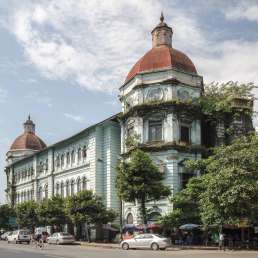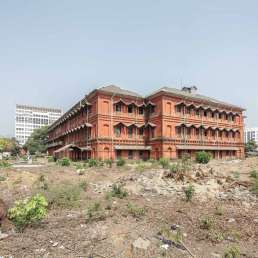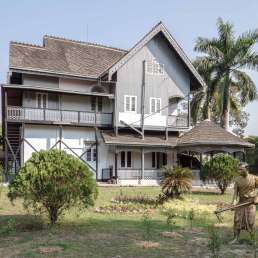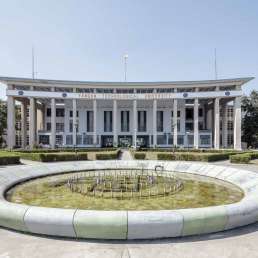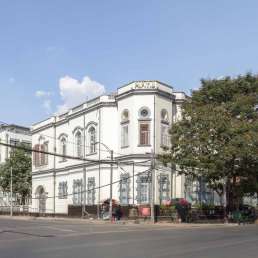Address: 372 Bo Aung Kyaw Road
Year built: 1899-1911
Architect: Jos Cuypers
The Cathedral of St Mary the Virgin is Yangon’s biggest Roman Catholic church. Its neo-Gothic style is reminiscent of cathedrals built around the same time in northern Europe, but the inside sets it apart: The colourful bricks offer a livelier feel than its often austere contemporaries. St Mary’s was one of two major Christian churches built at the turn of the 20th century. The other is the Anglican Holy Trinity Cathedral in nearby Pabedan Township.
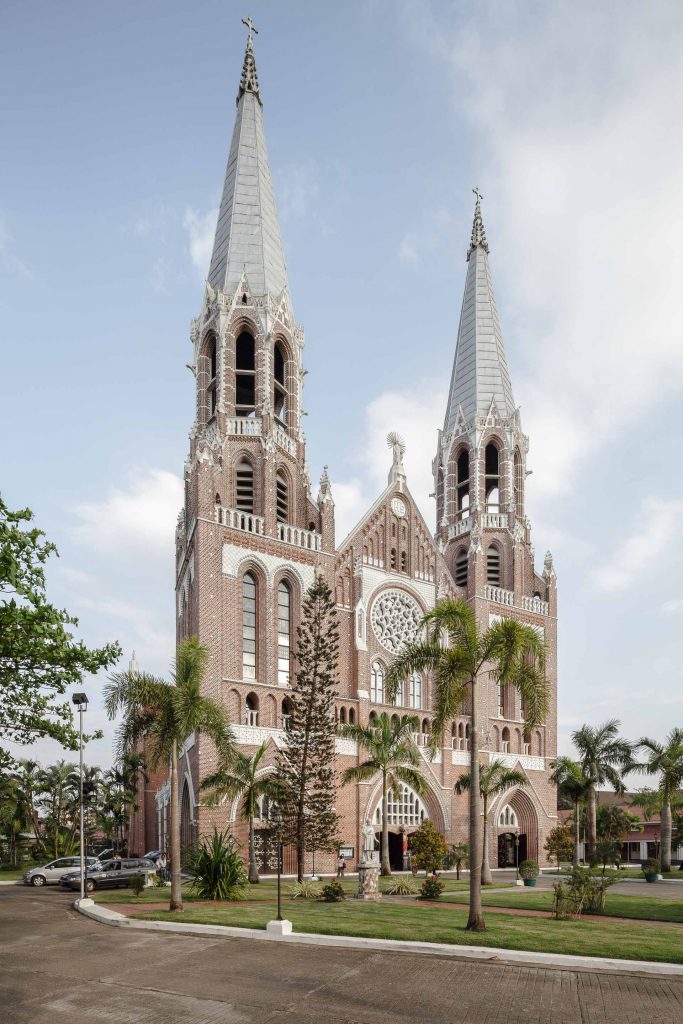
Though consecrated in 1911, St Mary’s history goes back to the late 19th century. The main Catholic church had by that point become too small for the congregation and Rangoon’s energetic first bishop, Paul Ambroise Bigandet, wanted a cathedral. He successfully lobbied the Government of India (in other words, the British colonial authority over Burma) for the funds. Henry Hoyne-Fox—who built the iconic Secretariat—made designs for a Byzantine-style cathedral.

However, the grounds purchased on what is today’s Bo Aung Kyaw Street were initially too swampy; the foundations needed to be strengthened using vertical logs pushed into the ground. As the preparatory work dragged on for longer than expected, Hoyne-Fox abandoned the project and took a long leave of absence. Meanwhile, Bishop Bigandet passed away. His successor, Alex Cardot, commissioned Jos Cuypers to continue the work. A Dutch architect whom Cardot had met during a trip to Europe in 1895, Jos was the son of Pierre Cuypers, who designed the Rijksmuseum and the central train station in Amsterdam.
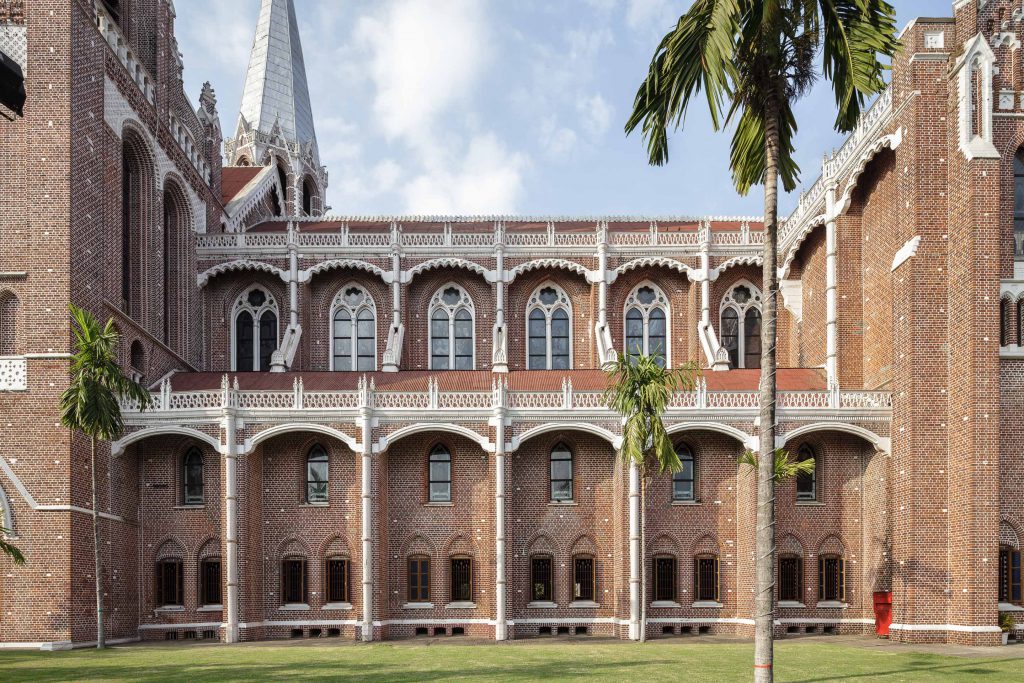
Cuypers submitted two different designs for the Rangoon assignment. The first one represented a mixture of his Saint Bavo Cathedral in Haarlem with added ‘oriental’ influences as understood at the time. (Dutch architecture during that period made frequent references to a romanticised image of the country’s colonial possessions in Asia.) The second—successful—proposal was a more conventional, European-style cathedral in Gothic Revival style. As he had never set foot in Rangoon, Cuypers’ designs required revisions for local conditions. Father Jenzen, who studied with Cuypers in the Netherlands, oversaw these adaptations in Rangoon. His close supervision of the untrained staff ensured the foundation’s successful stabilisation. The cornerstone of white marble was laid in 1899. Later Jenzen felt confident enough to add spirals to Cuypers’ towers, placing significant additional weight upon the existing structure.
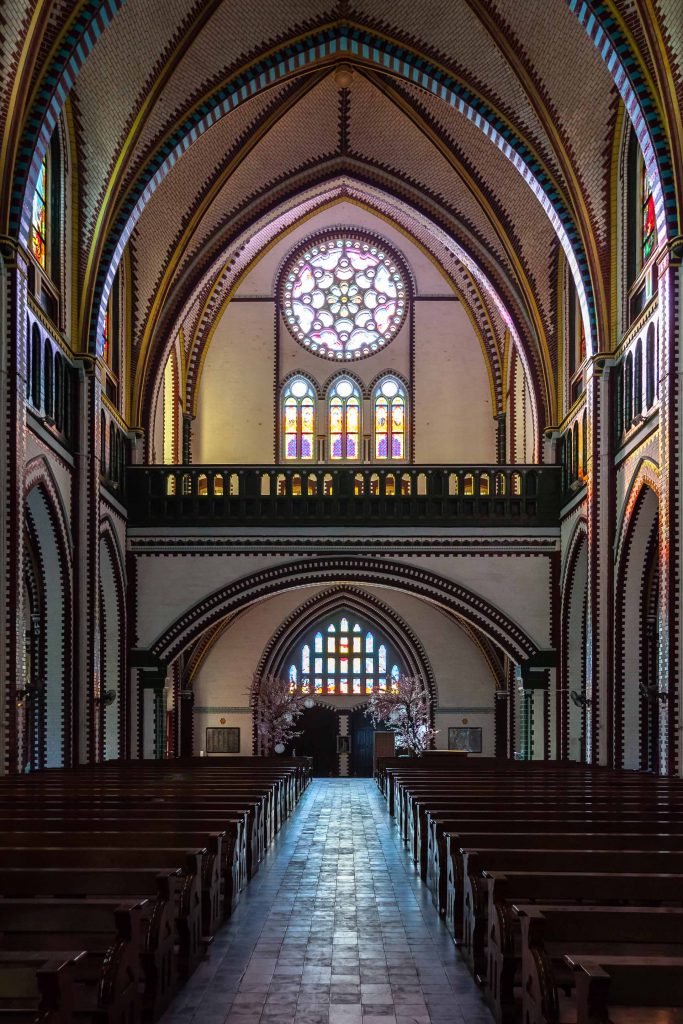
Crippled by an accident during construction, Father Jenzen lived long enough—just—to see the cathedral’s dedication in 1911. As proof of its structural soundness, it survived the 20th century almost unscathed. The 1930 Pegu earthquake only inflicted minor damage to several vaults and two arches. Aerial bombs dropped on Rangoon during the Second World War missed the cathedral, though nearby explosions did break its glass windows. The damage to the cathedral from Cyclone Nargis in 2008 was similarly limited to shattered windows.
The Catholic Church in Myanmar remains split into three archdioceses. (Yangon is the headquarters for the Southern Burma Vicariate.) In January 2015 Pope Francis named Myanmar’s first cardinal, Charles Bo, also the Archbishop of Yangon. He is a leading voice of tolerance in response to anti-Muslim sentiment in parts of the country.
